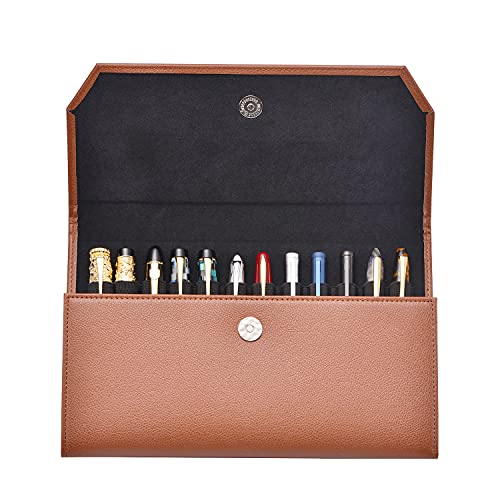The idea of taking a fountain pen on the go may seem daunting at first, but there are many advantages associated with this style of writing instrument. From practicality to creativity, having a fountain pen in your pocket can prove extremely advantageous. Not only will it help keep your important documents legible and organized, but it can also spark inspiration and enhance productivity in unexpected ways.
Let me take the mystery out of carrying a fountain pen in your pocket. In this article, I’ll explain why it’s convenient and beneficial to bring along a trusty writing companion wherever life takes you. With these tips and tricks up your sleeve, you’ll be sure never to miss an opportunity or creative thought again!
Advantages Of Carrying A Fountain Pen
Carrying a fountain pen can be incredibly convenient and stylish. In fact, the classic writing instrument is enjoying a resurgence due to its portability and durability. Statistics show that more than 70% of people who carry a fountain pen prefer it over other types of pens. Whether you’re looking for an everyday companion or something special to mark life’s big moments, there are numerous advantages in putting this timeless tool into your pocket.
Fountain pens are renowned for their elegant designs which make them ideal for expressing yourself through writing; they offer unparalleled comfort compared to regular pens for extended periods of use with no hand fatigue; and if properly cared for, these reliable tools can last decades! What’s more, when you choose one made from high-quality materials such as metal or wood, it will add sophistication to your style statement.
Carrying a fountain pen offers many benefits: convenience, portability, style, classic design, and long-term value. Its enduring appeal has made it increasingly popular among those seeking innovation in their everyday lives. With all these features in mind, transitioning into discussing some potential disadvantages makes sense.
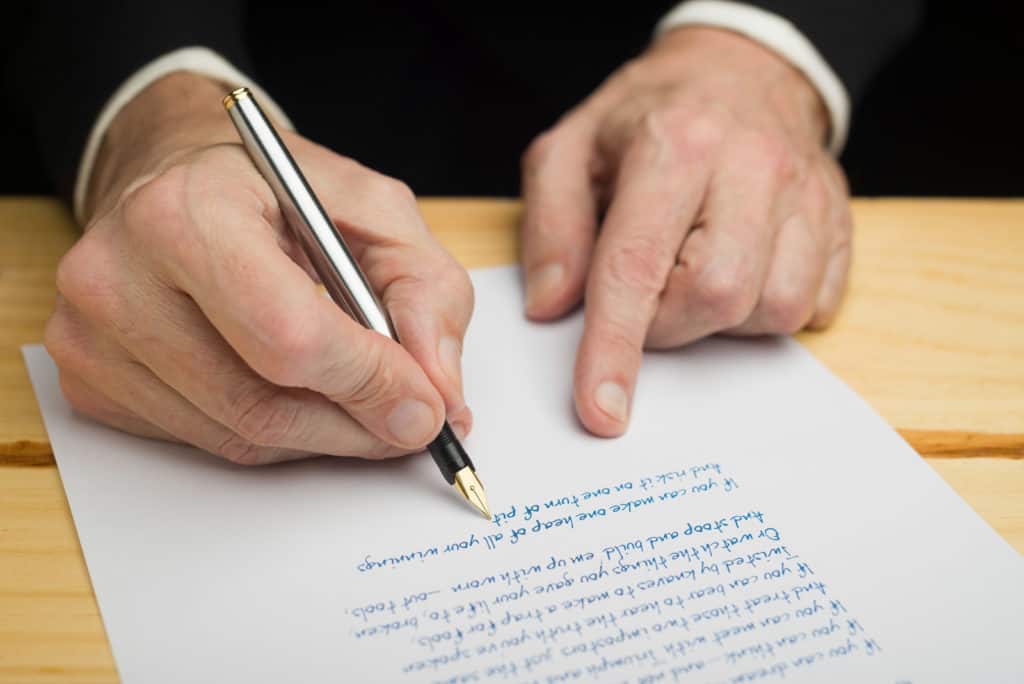
Disadvantages Of Carrying A Fountain Pen
While carrying a fountain pen in your pocket can be convenient, it also comes with some significant drawbacks. Several safety concerns should be taken into account before choosing to carry one this way. Here is a list of potential problems:
- Ink leakage
- Pocket damage
- Clothing damage
Ink leakage is the most obvious issue when it comes to carrying a fountain pen in your pocket. Without proper protection, ink may leak onto clothing and other items stored inside pockets. This could lead to staining and discoloration on both fabric and skin, as well as an unpleasant odor from dried ink residue. Furthermore, if the ink were to come into contact with any electronic device, such as a smartphone or tablet, then permanent damage could occur.
This article we have about how to remove fountain pen ink from your hands might be interesting.
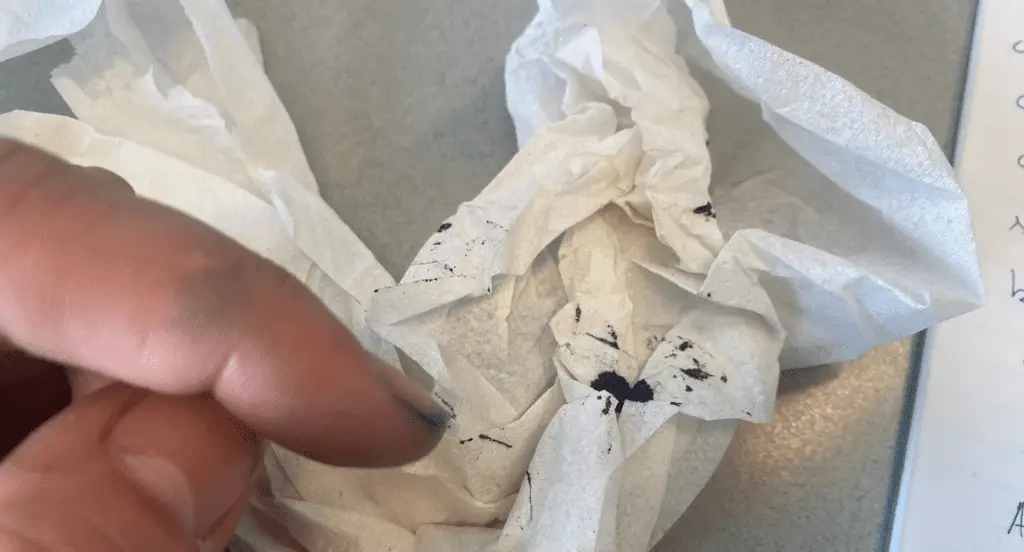
Pocket damage is another concern while carrying a fountain pen in one’s pocket. Pens have sharp edges which can wear away at the material used for pockets over time – resulting in unsightly rips and tears. Additionally, due to their small size, there is always the risk of dropping them without notice and losing them altogether – especially if they lack anti-theft features such as clips or straps! Finally, clothing damage cannot be ignored either; pens can snag on loose threads or buttons while being carried around – leading to premature wear and tear on garments over time.
It’s important to weigh up these disadvantages against the advantages of carrying a fountain pen before deciding whether or not it’s worth taking the risk. The next section will discuss specific safety precautions you can take to ensure these issues don’t arise when transporting your writing instrument in your pocket.
Safety Concerns For Carrying A Fountain Pen
Carrying a fountain pen in one’s pocket can be an inviting prospect, yet it is essential to consider the risks of doing so. Pocket-lint, fabric damage, and accidental leakage can all cause severe issues with a fountain pen if not considered. Below are some safety concerns and ways to avoid them when carrying a fountain pen:
| Safety Concerns | Avoidance Strategies |
|---|---|
| Fountain Pen Damage | Store pens away from direct sunlight or extreme temperatures Store pens upright rather than flat on their side Avoid dropping your pen as much as possible |
| Pocket Lint | Place pens in cases/holders for safe storage Consider using pockets that have less debris such as jeans instead of suit pants |
| Accidental Leakage | Use water-resistant ink cartridges Refill carefully so that no excess ink escapes from the nib Keep the cap firmly closed while storing in your pocket |
It is also wise to remember that different fabrics react differently to contact with ink. To prevent staining clothing or skin, carry your fountain pen in either sturdy leather pouches or plastic clamshell holders. This will ensure both protection and convenience when out and about.
Thus far we’ve discussed how best to protect a fountain pen whilst stored in one’s pocket but what other options exist? There are a variety of attractive custom-designed cases available which provide comfort without sacrificing style – making them perfect for the modern user who wants both functionality and fashion at once.
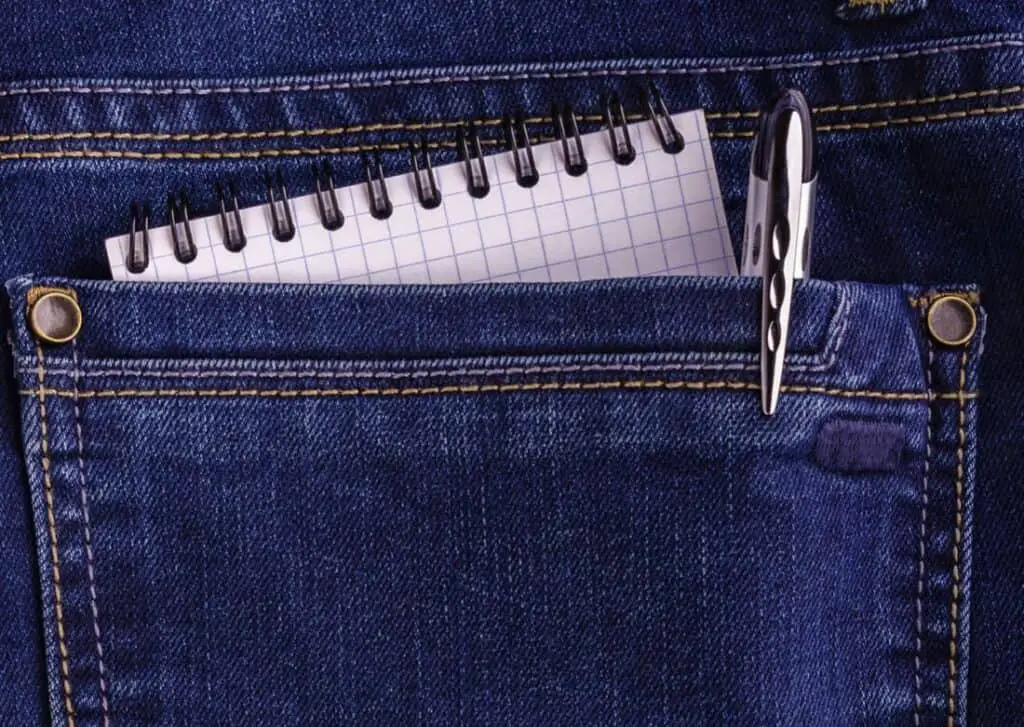
Types Of Cases For Carrying A Fountain Pen
When it comes to carrying a fountain pen, several options are available. From cases and pouches to sleeves and holsters, you can find something that suits your needs. Here is an overview of the different types of cases for a fountain pen:
- Fountain Pen Cases – These are typically made out of leather or synthetic material and come in various sizes and colors. They offer great protection against scratches and bumps while still being lightweight enough to carry around comfortably.
- Fountain Pen Pouches – Similar to cases but smaller in size, these are perfect for keeping your pen close at hand but also protected from dust and debris. The fabric used is usually waterproof or water-resistant so you don’t have to worry about getting it wet if caught in the rain or dropped into a body of water.
- Fountain Pen Sleeves – As their name implies, these provide extra padding for your pen when not in use, protecting it from any potential damage caused by tossing it around carelessly in your bag or pocket. They come in both hardshell and softshell varieties, depending on how much cushioning you need.
- Fountain Pen Holsters – This type of case offers maximum portability as they clip onto belts or straps making it easy to take with you wherever you go without having to lug around a bulky pouch or sleeve all day long! It’s also one of the most secure ways to keep track of your pen since they’re designed specifically for this purpose.
For those looking for more than just protection, fountain pen wallets offer style and security. Made from high-quality materials such as genuine leather, they give off an executive vibe while providing ample space for storing cards, cash, and other small items alongside your writing instrument of choice. Without adding too much bulkiness to your ensemble either! With so many choices available, finding the right case for your fountain pen shouldn’t be difficult – no matter what look you’re going for! Now let us explore alternatives to putting a fountain pen in your pocket…
Alternatives To Putting A Fountain Pen In Your Pocket
Now that we have explored the different types of cases for carrying a fountain pen, it is time to look at alternative ways to carry one without putting it in your pocket. Carrying pouches are an excellent option, as they come in all shapes and sizes and can be used to safely store your pen when not in use. A pen clip or sheath is another great choice for those who prefer a more discreet way of transporting fountain pens. These clips attach securely to clothing and help keep your pen from shifting around during transport. Pen sleeves are also becoming increasingly popular due to their portability and ability to protect the nib from damage. Finally, zippered pouches provide even greater protection against dust and dirt while still allowing easy access on-the-go.
No matter which method you choose, there is no doubt that these alternatives offer superior protection compared to simply putting your fountain pen into your pocket. In addition, they provide stylish options that make expressing yourself with a unique writing instrument even easier than ever before!
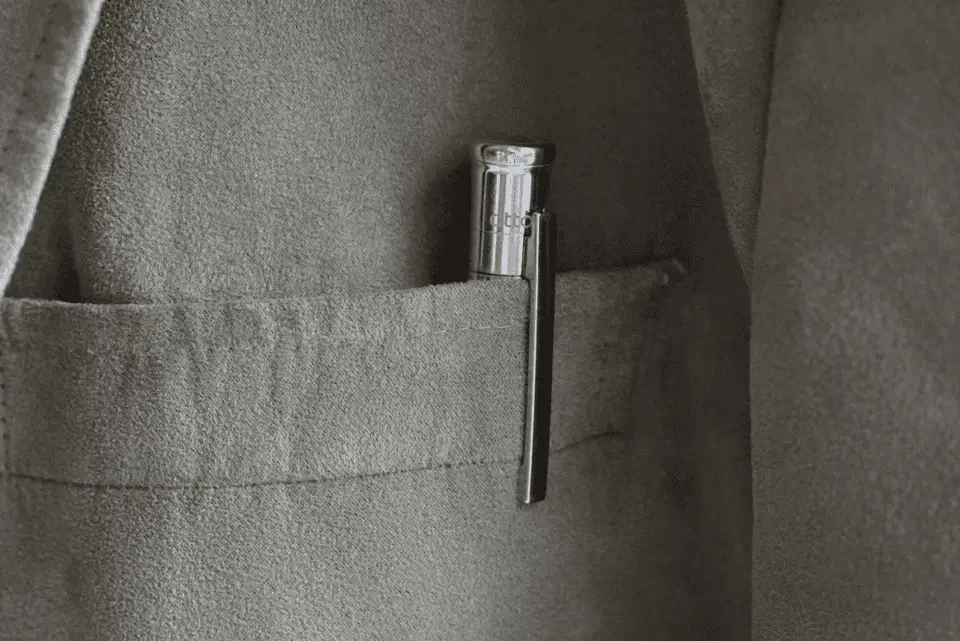
Frequently Asked Questions
How Long Should A Fountain Pen Last?
When it comes to fountain pens, one of the most common questions is: how long should a fountain pen last? This question is often asked by people who want to ensure they get the most out of their investment. After all, there’s nothing worse than buying an expensive pen only to have it break after just a few uses! Fortunately, when you purchase a quality fountain pen, you can expect your writing instrument to provide many years of use and enjoyment.
The life expectancy of your fountain pen will depend on several factors, including its construction and maintenance. Quality materials such as gold nibs or stainless steel are far more durable than plastic parts and allow for longer periods of use before needing replacement. Additionally, proper care can extend the lifespan of your fountain pen; refilling cartridges regularly with ink and cleaning any build-up from the nibs prevents dysfunctional performance due to clogging or corrosion.
I recommend that users consider both material quality and upkeep when calculating the longevity of their writing instruments. If you invest in high-quality components and maintain them properly, you can enjoy years of reliable service from your beloved fountain pen – making it worth every penny!
Are Fountain Pens More Expensive Than Regular Pens?
Regarding fountain pens, there is an undeniable difference in cost compared to regular pens. Fountain pen cost and price have always been higher than regular pens due to the intricate parts needed for proper functioning and longevity. But how much more expensive are they? Here’s a quick rundown:
- A basic fountain pen can range from $15 – $50
- An average quality fountain pen will be around $50-$200
- High-end fountain pens may exceed $500
This price comparison between fountain and regular pens has been evident for many years now. The craftsmanship in creating each part for a reliable writing experience with a fountain pen brings about greater production costs reflecting its retail price. When put side by side, there is no doubt that a high-quality fountain pen will always have a significantly larger price tag compared to your standard everyday ink ballpoint or rollerball.
At the same time, however, it should be noted that investing in one good quality fountain pen could last you decades if taken care of properly, far longer than any ordinary pen would! This makes up for the initial large expense over regular pens as you won’t need replacements nearly as often. Plus, anyone who appreciates fine writing instruments knows that having access to such sophisticated technology creates opportunities for enhanced creativity and productivity through their work – something money cannot buy.
Fountain pens offer so much more than just convenience when it comes to writing – they inspire too! Whether used professionally or recreationally, these classic writing tools allow users of all ages to explore new levels of self-expression while remaining connected to the timeless art form of traditional handwriting.
Are Fountain Pens Better For Writing Than Regular Pens?
Regarding writing, fountain pens are often considered superior to regular pens. This is due in part to the quality of ink used and the nib sizes available with a fountain pen. With more control over these two factors, users can create better quality written pieces than regular pen writing.
The type of ink used by fountain pens gives them an edge when it comes to writing. The formula for this particular kind of ink allows it to flow smoothly out of the nib onto paper, creating a much cleaner result than a traditional ballpoint or gel-based pen. Additionally, some brands offer special formulas that allow your words stay longer without bleeding into other parts of the page.
Furthermore, different size nibs also contribute to higher quality writing for fountain pens. A variety of widths means you have an option depending on whether you want thin lines (for calligraphy) or thicker ones (to make bold statements). Many people also find that having a range of nib sizes offers greater flexibility when creating unique art pieces – such as handmade cards – rather than relying solely on standard-sized tips found in most conventional pens.
In short, if you’re looking for top-notch writing results, investing in a fountain pen might be worth considering; they give users access to premium features like specialized ink types and adjustable tip sizes that will take their compositions up several notches!
How Do You Fill A Fountain Pen?
Filling a fountain pen is an art that has been around for centuries, and with the right tools, it can be quite simple. Did you know that millions of people across the globe use refillable fountain pens daily? It’s true! Whether you’re a beginner or an experienced writer looking to switch from ballpoint pens, there are several ways to fill your fountain pen.
First off, you’ll need to choose the ink for your refillable fountain pen. Various types of inks are available such as pigmented, water-based, and oil-based inks; each type offers different writing qualities and characteristics. Once you’ve chosen your ink type, look into purchasing ink cartridges or converter refills, which allow you to easily fill up your pen with fresh ink whenever needed. Bottled inks are also readily available for those who prefer more traditional methods and come in a wide variety of colors.
In addition to having a reliable supply of ink on hand, proper maintenance is essential when filling any fountain pen. Cleaning out old residue after each refill will ensure smooth writing performance while preventing potential clogging issues down the line. Keeping your nib lubricated by dipping it into clean water once a week can also help keep it running smoothly! Furthermore, ensuring all components are properly assembled before inserting new cartridges or refills helps prevent leakage from occurring during usage.
Whether you prefer vintage or modern models of fountain pens, understanding how they work and how to care for them is key to achieving optimal performance over time. With just a few supplies like ink cartridges or converter refills on hand and some basic steps like cleaning regularly and keeping the nib lubricated – success at mastering this skillful craft awaits!
Is It Difficult To Maintain A Fountain Pen?
Maintaining a fountain pen is not as difficult as it may seem. With the right care and upkeep, keeping your favorite writing instrument in tip-top condition can be easy. Fountain pens require regular maintenance and repair if they continue functioning properly. It’s important to know what goes into caring for a fountain pen so that you can enjoy many years of reliable performance from your writing tool.
The first step in maintaining a fountain pen is to ensure it has plenty of ink at all times. Regularly filling up the reservoir with fresh cartridges or converters will help ensure consistent flow throughout every writing session. Additionally, cleaning out any dried ink residue after each use will prevent clogging and improve overall performance over time. This includes using rubbing alcohol on the nib or disassembling certain parts of the pen itself to get rid of any built-up grime or dirt that could affect its functionality.
Fountain pens also need occasional repairs, like replacing worn seals or adjusting the internal pressure system when necessary. Having an experienced professional handle, these tasks is often recommended since they have the expertise needed to do them correctly without causing any damage to your precious writing instrument. Taking your fountain pen regularly for checkups with this specialist will help prolong its lifespan and minimize costly repairs down the road.
By taking proper care of your fountain pen, you should be able to enjoy smooth writing experiences for many years into the future – no matter how much use it gets! Therefore, knowing about maintaining a fountain pen isn’t just helpful but essential for making sure yours keeps working optimally well into old age.
Conclusion
In conclusion, fountain pens are an excellent choice for handwriting and offer a unique writing experience. While they may cost more than regular pens, the quality of their ink is usually superior and can last longer. With proper maintenance, a fountain pen should easily last several years before needing repair or replacement.
I’ve found that many people who switch to fountain pens never go back; in fact, according to a recent survey conducted by The Pen Company, 95% of those surveyed said they will not use any other type of pen after trying out a fountain pen!
That statistic alone proves how amazing these instruments truly are – you get what you pay for when it comes to fountain pens! They require some slight upkeep but the end result is definitely worth the effort because nothing compares to the smoothness and clarity of being able to write with one. So if you’re looking for something special, why not try a fountain pen? You won’t regret it!

